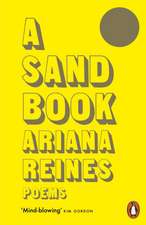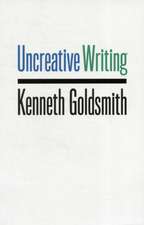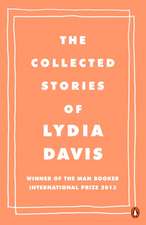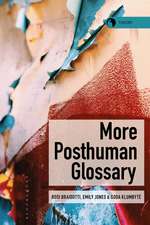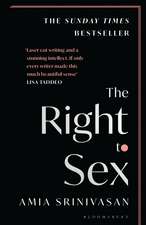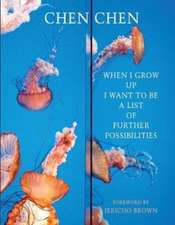Color Theory: A Critical Introduction
Autor Aaron Fineen Limba Engleză Paperback – 8 sep 2021
| Toate formatele și edițiile | Preț | Express |
|---|---|---|
| Paperback (1) | 251.43 lei 3-5 săpt. | +80.94 lei 6-12 zile |
| Bloomsbury Publishing – 8 sep 2021 | 251.43 lei 3-5 săpt. | +80.94 lei 6-12 zile |
| Hardback (1) | 638.36 lei 3-5 săpt. | +34.77 lei 6-12 zile |
| Bloomsbury Publishing – 8 sep 2021 | 638.36 lei 3-5 săpt. | +34.77 lei 6-12 zile |
Preț: 251.43 lei
Preț vechi: 281.48 lei
-11% Nou
Puncte Express: 377
Preț estimativ în valută:
48.11€ • 50.23$ • 39.82£
48.11€ • 50.23$ • 39.82£
Carte disponibilă
Livrare economică 14-28 martie
Livrare express 27 februarie-05 martie pentru 90.93 lei
Preluare comenzi: 021 569.72.76
Specificații
ISBN-13: 9781350027305
ISBN-10: 1350027308
Pagini: 376
Ilustrații: 162 color and bw illus
Dimensiuni: 189 x 246 x 23 mm
Greutate: 1.04 kg
Editura: Bloomsbury Publishing
Colecția Bloomsbury Visual Arts
Locul publicării:London, United Kingdom
ISBN-10: 1350027308
Pagini: 376
Ilustrații: 162 color and bw illus
Dimensiuni: 189 x 246 x 23 mm
Greutate: 1.04 kg
Editura: Bloomsbury Publishing
Colecția Bloomsbury Visual Arts
Locul publicării:London, United Kingdom
Caracteristici
Enables students to put theory into practice by gaining a richer understanding of the why and how of color choices in their own work
Notă biografică
Aaron Fine is Professor of Art, and Chair, at Truman State University, USA, where he teaches drawing, painting, and history of design - among other topics. He has 10 solo exhibitions and over 50 group exhibitions on his CV and 20 years experience teaching in art and interdisciplinary studies at the college level. He received an MFA in Painting from Claremont Graduate University, USA. He is the author of the mixed genre creative nonfiction book Dialogues on Color (2017).
Cuprins
List of ImagesAcknowledgementsIntroduction1. Natural Resources and Trade: Color Use in Traditional Cultures2. Knowing at a Distance: Color Problems in Ancient Greek Thought3. Stained Glass and Illuminations: European and Islamic Color Theory before Galileo4. Prisms, Mirrors, and Lenses: The Newtonian Revolution5. Romanticism and Chromophobia: The Creation of Color Theory in the 19th Century6. The Science of the Invisible: Color Classification Systems and Spiritual Color7. High Modern: Color Use at the Bauhaus and in Abstract Expressionism8. Postmodern: Contemporary Directions in Color UseGlossaryAbout the Author
Recenzii
Almost everyone sees color - but this might be the only general statement it is possible to make on the subject. When we begin to ask how color is seen and what it is seen to mean, what value colour has and to whom: then any notion of a consensus quickly falls apart. Aaron Fine's rich and wide-ranging study discusses numerous theories of color, some intersecting and overlapping, others divergent and conflicting. This book is an invaluable resource for anyone interested in how different cultures have interpreted the vibrant patterns of reflected light that almost all of us see.
Color Theory is a superb book. With impeccable scholarship it spans centuries, regions and disciplines to give the reader a panoptic account of the many guises of colour in society, art and philosophy. Fine's prose is clear and thought-provoking. Readers new to the theory of colour will have no better guide to the subject, and those already familiar will discover many new and intriguing things.
If you are curious about learning color theory, I suggest that you experiment with some watercolor. If you are serious about color theory, I suggest you read Aaron Fine's book. This is the intelligent and active approach to the subject. Placed on a spectrum between John Gage's heady and densely academic, historical color books and the excellent 'semester-minded' color texts of the like of Pentak and Zelanski, Fine's book provides toothsome material for the advanced student with opportunities for practical application and testing of theory. While many color texts have slapped a 'global color' chapter at the last of the book, Fine squares the world and its people into the beginning perspectives in chapter 1 and works out from there. This is, I hope, the beginning of a new generation of color writing that embraces a thoughtful, world perspective
Color Theory is a superb book. With impeccable scholarship it spans centuries, regions and disciplines to give the reader a panoptic account of the many guises of colour in society, art and philosophy. Fine's prose is clear and thought-provoking. Readers new to the theory of colour will have no better guide to the subject, and those already familiar will discover many new and intriguing things.
If you are curious about learning color theory, I suggest that you experiment with some watercolor. If you are serious about color theory, I suggest you read Aaron Fine's book. This is the intelligent and active approach to the subject. Placed on a spectrum between John Gage's heady and densely academic, historical color books and the excellent 'semester-minded' color texts of the like of Pentak and Zelanski, Fine's book provides toothsome material for the advanced student with opportunities for practical application and testing of theory. While many color texts have slapped a 'global color' chapter at the last of the book, Fine squares the world and its people into the beginning perspectives in chapter 1 and works out from there. This is, I hope, the beginning of a new generation of color writing that embraces a thoughtful, world perspective


